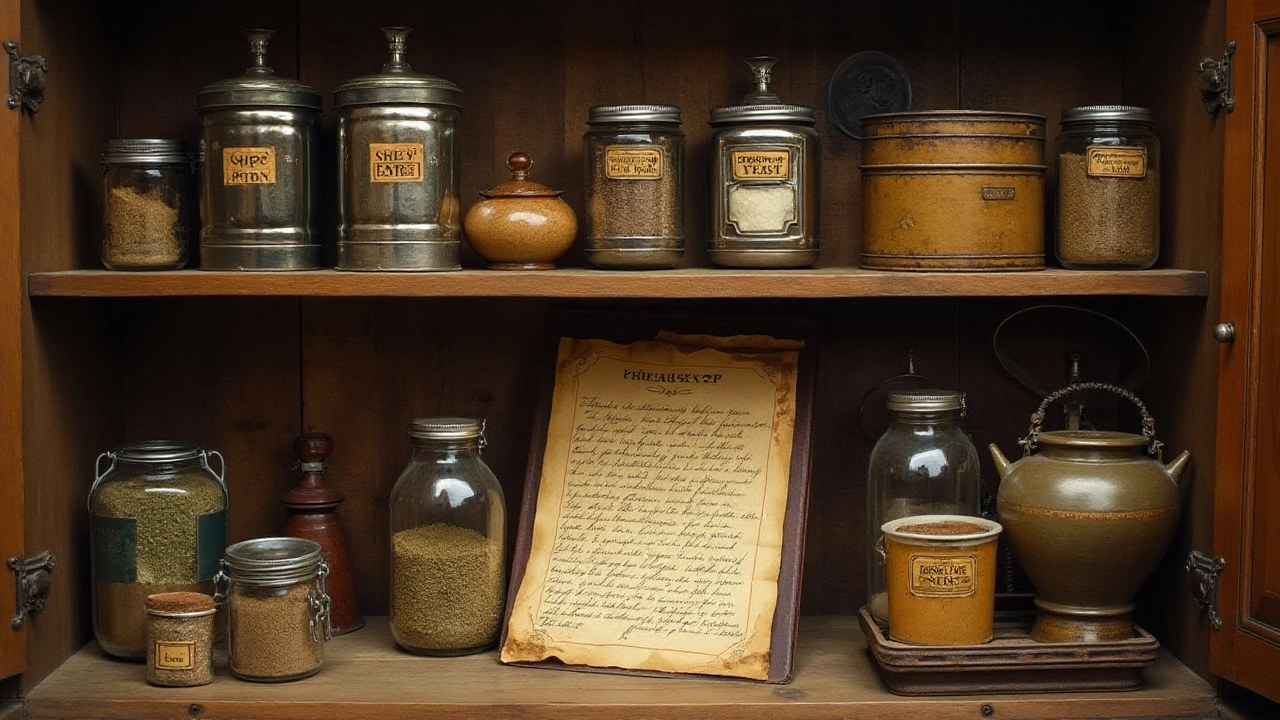Home brewing has emerged as a delightful hobby for many, offering an exciting way to create personalized flavors while learning the art of fermentation. However, one common question that arises among enthusiasts is, "How long do these home brewing kits last?" The answer isn't as straightforward as you might think, as several factors can extend or shorten the lifespan of your home brewing equipment.
Diving into the world of home brewing, it's essential to understand what makes up a typical brewing kit and how each component contributes to the process. From fermenters to tubes, each part plays a vital role, and understanding these can help you make the most of your kit.
- Understanding Home Brewing Kit Components
- Factors Affecting Kit Longevity
- Proper Storage Techniques
- Cleaning and Maintenance Tips
- When to Replace Your Kit
- Extending the Life of Your Brewing Kit
Understanding Home Brewing Kit Components
Venturing into the realm of home brewing can be an exhilarating experience, one that promises endless creativity and the joy of sipping on something crafted by your hands. To embark on this journey, it's crucial to familiarize yourself with the various components that constitute a typical home brewing kit. These kits vary in complexity, but several core pieces are nearly universal, serving as the backbone of your brewing saga.
The primary vessel of creation in any brewing kit is the fermenter. Often made of food-grade plastic or glass, this container is where the magic happens. It's here that yeast feasts on sugars, turning them into alcohol and carbon dioxide. Selecting the right fermenter size, typically between one to five gallons, can significantly affect your batch size and your brewing ambitions. Some enthusiasts prefer glass, valuing its non-porous nature and ease of sanitation; however, the shatter-resistance of plastic can offer peace of mind and convenience for beginners.
Next in line are the airlocks, which prevent your fermenting brew from becoming a target for unwanted invaders like dust or bacteria. These little gadgets allow the CO2 produced during fermentation to escape while keeping contaminants at bay. Pair these with a reliable rubber or silicone stopper, and you have a seal that maintains the integrity of your fermentation process. It's like an orchestra – each element working in sync to maintain harmony. As Benjamin Franklin once suggested, "Beer is proof that God loves us and wants us to be happy." Such tools are your divine instruments in this hoppy symphony.
Another indispensable part of these kits is the siphon system, usually consisting of tubes and a racking cane, which is critical for transferring your brew from one container to another. This method minimizes the introduction of air, safeguarding your precious batch from oxidation, which could otherwise develop unwanted flavors or diminish the quality of your final product.
On the measuring front, a well-equipped kit will include a hydrometer with a testing tube. This handy tool allows you to measure the specific gravity of your liquid, essentially estimating the potential alcohol content and ensuring fermentation is progressing as planned. Accurate readings guide you in adjusting your brewing process, potentially saving a brew from an untimely demise. Pair this with a reliable thermometer, and you gain even more control, ensuring yeast operates within its optimal temperature range, making every degree count toward getting that perfect pint.
Factors Affecting Kit Longevity
When it comes to the lifespan of home brewing kits, several factors can play a crucial role in determining how long your equipment will remain functional and effective. One significant factor is the material quality of the kit components. Kits made from high-grade materials, such as stainless steel, tend to exhibit a longer life expectancy in contrast to those constructed from plastic, which may degrade over time due to repeated exposure to heat and acidic ingredients. This clearly indicates why investing a bit more in quality equipment can be beneficial in the long run.
Another critical aspect is the frequency of use. If you're an avid brewer, brewing several times a month, the wear and tear on your kit will naturally be greater than if you only brew occasionally. Each brewing session puts the components through their paces, permanently affecting elements like seals and gaskets. These minute yet vital parts can depreciate more rapidly with frequent brewing, warranting regular inspections and replacements to ensure optimal functionality.
Storage conditions are also key to maintaining the longevity of your brewing equipment. Moisture, extreme temperatures, and improper storage can lead to premature aging of the components. It is vital to ensure a dry and stable environment to store your kit when not in use. Storing equipment in damp conditions could lead to mildew or corrosion, particularly within metal components. Such environmental impacts can significantly shorten the lifespan of the kit, necessitating earlier replacements.
"Proper care and storage can extend a brewing kit’s life by up to three years," says Tom Brewer, a veteran homebrewer and columnist for the Craft Beer Times.
In addition to these factors, the quality and consistency of maintenance routines profoundly affect a kit's longevity. Regular cleaning after each use is essential, as leftover residues can cause bacterial growth, spoiling future brews and compromising the materials of the kit itself. Implementing a routine maintenance checklist is beneficial – visually inspect all parts, replace worn-out components, and sanitize everything meticulously.
Data further suggests that home brewers who consistently fertilize their skills through brewing workshops note fewer kit replacements over the years. The table below illustrates the average lifespan of kits based on material:
| Kit Material | Average Lifespan (Years) |
|---|---|
| Stainless Steel | 5-7 |
| Plastic | 1-3 |
| Glass | 4-6 |
The table emphasizes the need for choosing durable materials which can withstand excessive use, thus enhancing the lifespan of the home brewing kit. Bearing these factors in mind will ensure that you're not only enjoying flavorful brews but also maximizing the life expectancy of your brewing apparatus.

Proper Storage Techniques
Proper storage techniques are critical for maintaining the longevity and performance of home brewing kits. Apartments and homes often offer limited space, so choosing the right location for storing brewing equipment can be challenging, but not impossible. Navigating this task begins with understanding how each component of your kit interacts with its environment. Fermenters, for example, need to be kept away from direct sunlight, which can lead to premature aging and the degradation of materials. A cool, dry space is generally recommended, as excessive heat and moisture can accelerate wear and tear.
When storing your kits, ensure that they are on a stable surface. A shelf or a dedicated cabinet works well as it prevents accidental spillage, which can cause damage over time. Consider labeling each part of the kit before storage; doing so will make your next brewing session easier as you're not scrambling to find missing components. It's best to avoid stacking items unless necessary, as this can lead to unnecessary pressure and risk of cracking or breaking.
It's not just about where but also how you store your brewing equipment. Each brewing component should be thoroughly cleaned before storage. Even minimal residues can harbor bacteria or mold, which can cause spoilage or unpleasant flavors in future batches. Make a habit of inspecting each part for signs of wear before placing it back in storage. If you notice cracks, it's usually better to replace the component before the next use. Regularly checking your equipment can prevent small issues from turning into larger problems down the road.
An interesting thing to note—according to The American Homebrewers Association, "Proper storage is often overlooked by beginners, but it's as essential as maintaining the health of your yeast culture." In line with this, home brewers frequently overestimate the durability of their gear, especially if it's stored haphazardly. Dedicated storage solutions, like brewing cabinets or boxes, have emerged as useful tools for aficionados looking to extend the life of their investments.
Instead of guessing, seasoned brewers advise using a brewing equipment lifespan table to remind yourself of the recommended durations for storing each component safely. This involves recording your equipment's purchase date and estimated shelf life, which is helpfully listed on most user manuals. Such tables provide a quick reference to gauge when an item is nearing the end of its usability, reducing the risk of unexpected malfunctions mid-brew.
Cleaning and Maintenance Tips
For anyone stepping into the realm of home brewing, understanding the importance of cleaning and maintenance cannot be stressed enough. Maintaining a pristine brewing environment is key to ensuring your creations are not only delicious but safe for consumption. As you grow your knowledge and skills in crafting your batches, having a consistent cleaning routine becomes invaluable. In essence, proper maintenance extends not only the life of your brewing kit but also guarantees the quality of the beer. This is because any contaminant, however small, can severely alter the outcome of your fermentation process.
To start, it is vital to recognize the individual components of your kit that require regular attention. After each brewing session, ensure that fermenters, hoses, and other materials come into immediate contact with sanitizing agents specifically designed for brewing equipment. Allowing residue to linger increases the risks of bacterial growth which could impart off-flavors to your next batch. Many seasoned brewers also stress the caliber of cleaning agents used; opting for those free from fragrances and dyes, as they may leave behind undesirable residues.
The old adage 'clean as you go' holds particularly true in the brewing community.
Charlie Papazian, author of 'The Complete Joy of Homebrewing', once noted, "Brewers make wort, but the yeast makes the beer." The emphasis here is on providing yeast with a contamination-free environment for fermentation, a process largely assisted by diligent cleaning.Moreover, unlike simple rinsing, cleaning requires employing temperature-controlled sanitation to dissolve and eliminate sugars and proteins that typically adhere to equipment surfaces fiercely. The balance between the right temperature and time is largely a game of experience, often realized through trial and error.
Storage is equally crucial. Once items are properly cleaned, they should be dried thoroughly to prevent rust or mold accumulation. It may prove beneficial to devise a system wherein each piece of the kit is stored individually and away from your home’s ambient humidity. Categorizing their storage similarly to how one might arrange tools in a workshop ensures ease of access when required. Maintaining this organized protocol not only extends the lifespan of your current kit but aids in a smooth brewing experience time and again.
Occasionally, as part of a maintenance routine, inspect hoses and seals for wear and tear. Minor abrasions or seal degradation often go unnoticed until they cause larger inefficiencies in the brewing process. Replacement should be prompt to avoid mixing air into your fermentation tank, as oxygen exposure at the wrong stages can ruin efforts by instigating spoilage organisms and off-flavors.
Brewing equipment lifespan can often be increased by using high-quality materials and parts, but regardless of the material quality, their maintenance should never be compromised. Making it a habit to log every cleaning and its method effectively ensures you're following consistent cleaning patterns, minimizing the learning curve for any family member that might pick up brewing after you.

When to Replace Your Kit
Investing in a home brewing kit can be an exhilarating experience filled with creativity and experimentation. However, like any hobby that involves equipment, recognizing when to replace parts of your kit is crucial for maintaining the quality and safety of your home brews. First, let's consider the fermenter. Most kits come with a plastic fermenter, which is economically friendly but susceptible to scratches over time. These scratches can harbor bacteria and off-flavors, potentially impairing the taste of your beer. If you've noticed that your beer flavors have gone awry, it might be time to inspect your fermenter for damage.
Moving to hoses and siphons, these parts often experience wear and tear after repeated use and can become a breeding ground for unwanted contaminants. If your siphon has developed kinks or your hoses appear tarnished or stained, replacing them ensures that you maintain a clean and effective brewing process. Even the tiniest tears can lead to sanitation issues, affecting the overall fermentation environment. As a preventive measure, it's advisable to replace hoses and siphons annually, depending on usage frequency.
Perhaps the least thought about component is the airlock. This small piece of equipment plays a substantial role in regulating pressure and keeping undesired elements out. Yet, airlocks can break or accumulate residue that isn't easily cleaned away, compromising your brew’s integrity. If your airlock is compromised or you've had issues with fermentation pressure, purchasing a new one is a small investment for peace of mind. Glass options, as opposed to standard plastic, are more durable and can offer a better lifespan.
Brewing equipment lifespan can be closely tied to how well you maintain it, but knowing when to retire a piece is equally vital. Always inspect your equipment before each brew session. A small crack or a dulled instrument can escalate into larger problems, ruining not just one batch but several, if not addressed promptly. Remember, the quality of equipment directly influences the quality of beer. It's better to err on the side of caution and replace questionable parts early. As mentioned by a noted expert from Brew Your Own Magazine,
"Consistent quality and cleanliness in equipment are the foundation of any successful homebrewing endeavor."
Lastly, for those pieces that simply age out, consider making a list after each brew session of what didn't work as efficiently or what might have caused subtle imperfections. This proactive approach ensures you're brewing with reliable tools, minimizing frustrations along your beer-making journey. In the world of home brewing, attentively replacing your kit components not only preserves your hobby but vastly enriches it.
Extending the Life of Your Brewing Kit
Extending the life of your home brewing kits is both an art and science, embedded in understanding the myriad elements that contribute to wear and tear. To sustain the kit's usability and effectiveness over time, it's crucial to adopt certain practices that can add years to its service life. First and foremost, the choice of materials plays a significant role. Fermenters are often made from either plastic or glass, each with its pros and cons. Glass, for instance, is non-permeable and less prone to scratches, which means it doesn't risk harboring bacteria as plastics might, thus ensuring longer life.
There are easy ways to preserve the components of brewing equipment lifespan, and diligent cleaning is at the forefront. Sanitization is crucial; after each use, equipment should be meticulously cleaned with non-abrasive sponges to prevent scratches, especially in plastic components. Regular inspections for cracks or any wear signs are vital, as even the tiniest fracture can compromise the whole brewing process. In order to keep things running smoothly, make sure to check for damage after each brewing cycle.
If you are serious about longevity, think about the storage conditions. Storing your kit in a cool, dry place away from sunlight and extreme temperatures is preferred. This minimizes the risk of microbial growth and material degradation. Careful consideration of storage can prevent unnecessary replacements and contribute directly to the kit's prolonged efficacy.
Sometimes, a little ingenuity can also go a long way. Many enthusiasts share their wisdom and experiences in home brewing forums, where collective knowledge leads to innovative solutions for prolonging the lifespan of kits. As one dedicated brewer put it,
"Investing in quality initially can save heaps both in stress and in the cost of replacements,"a sentiment shared widely across the brewing community.
Educate yourself continuously. New methods and technologies frequently emerge, offering effective cleaning solutions or component upgrades that adhere to the latest brewing standards. Staying informed allows you to adapt, ensuring that your beer making kit shelf life stretches as far as possible.


